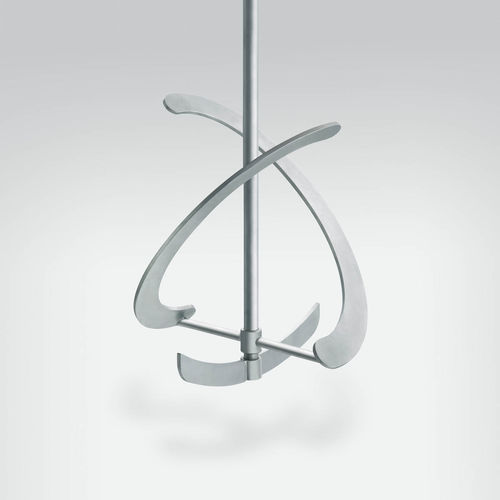The EKATO Paravisc belongs to the group of impellers with a small wall clearance. These impellers usually operate in the laminar regime, and the contents of the vessel are circulated by means of an axial pumping action. Such impellers are mainly used for fluids with a high viscosity or in media with a critical rheology.
Axial mixing with this impeller is achieved by means of a simple shape and arrangement of both main blades. The EKATO Paravisc can be operated so that it pumps either downwards or upwards, depending on the application case. For example, if it is pumping downwards, the fluid is forced downwards along the wall, is deflected by the vessel bottom and then flows back upwards along the agitator shaft to the surface. From the centre of the surface, it flows to the walls and is then pulled downwards again by the impeller blades. This ensures that mixing occurs at all points in the vessel and that no dead zones can develop. The maximum shear induced by this impeller is located in the gap between the vessel wall and the impeller. This is also the region with the highest energy dissipation.
In batch processes with changing viscosities, the EKATO Paravisc can also be equipped with inner baffles to achieve sufficient power input even at low viscosities.
For products showing strong structural viscosity, substances with a pronounced yield point or suspensions with a low liquid content, the EKATO Paravisc can act as a frame impeller within a coaxial mixing system. It is suitable for blending, improving heat transfer or incorporating solids into most viscous and pasty media.





